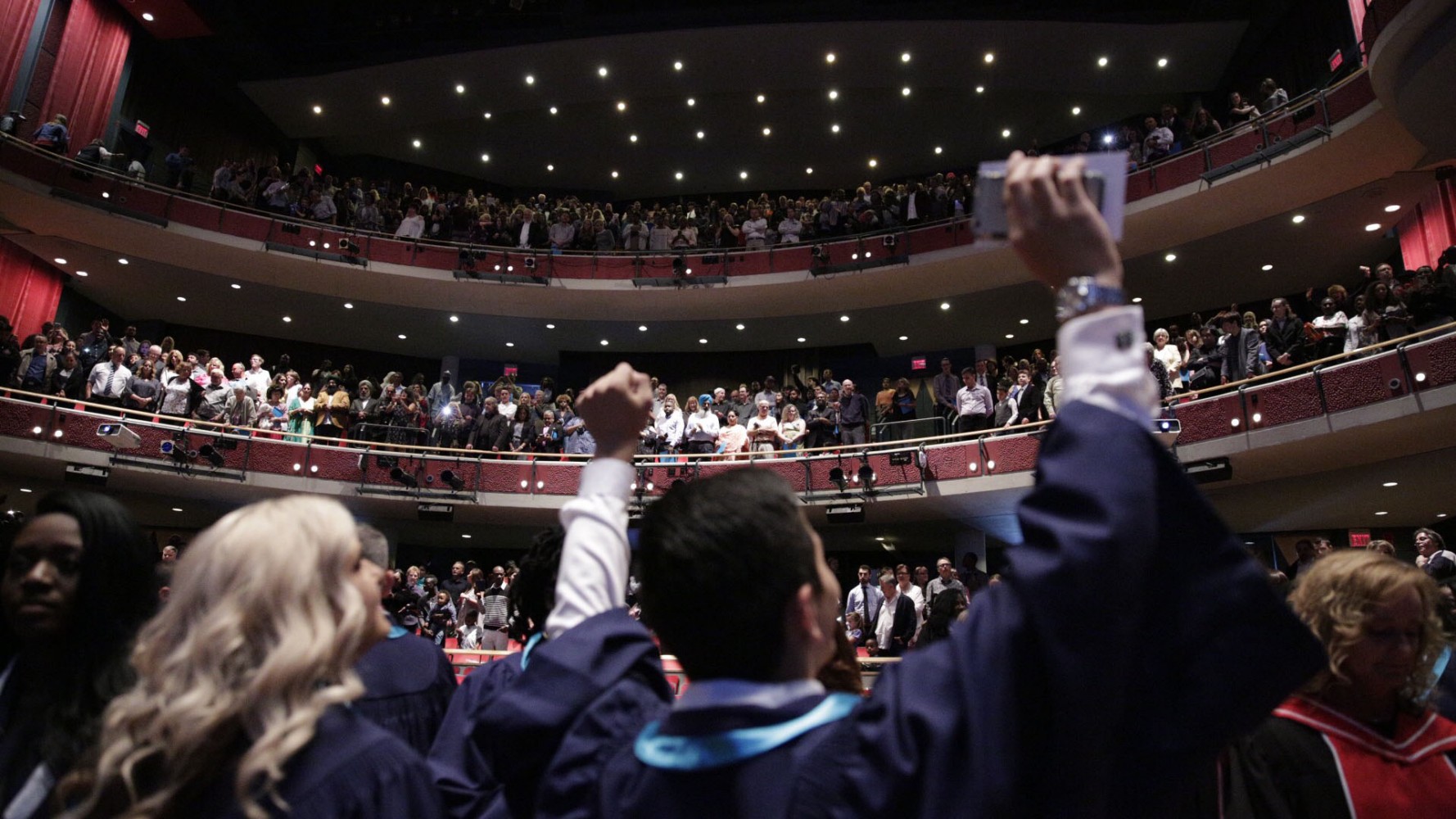
Federal policies on student visas could affect Peel as international student population grows
Mississauga and Brampton are two cities known for their particularly high levels of immigration — both with populations more than 50 percent first-generation newcomers. What is less well known is that they are also part of a movement to attract international students to Canada on study permits, with levels growing at pace since 2014.
For decades, people from across the world have come to Peel for work. Now thousands more view the region as somewhere to learn as well.
According to Immigrants, Refugees and Citizenship Canada, the number of foreign students studying across Canada rose 16 percent in 2018, part of a trend which has seen the number increase 73 percent in four years. Students from China and India are the most common, with the Indian contingent rising 350 percent compared to 2014.
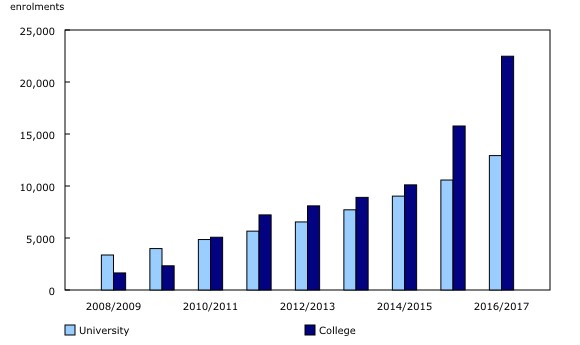
Enrolment of Indian International students in Canada
Mississauga and Brampton both boast several post-secondary destinations that draw some of those international students. Sheridan College has almost 7,700, while the University of Toronto Mississauga campus says 20 percent of its incoming students are international, putting roughly 2,800 of their cohort on study permits.
Although cuts by Doug Ford’s Progressive Conservatives recently shelved plans for a Ryerson University campus in downtown Brampton, post-secondary expansion in Peel is only on the backburner for now. NDP Leader Jagmeet Singh recently told The Pointer that if he was elected he would push for the campus to be funded at the federal level, attracting more international learners to the city.
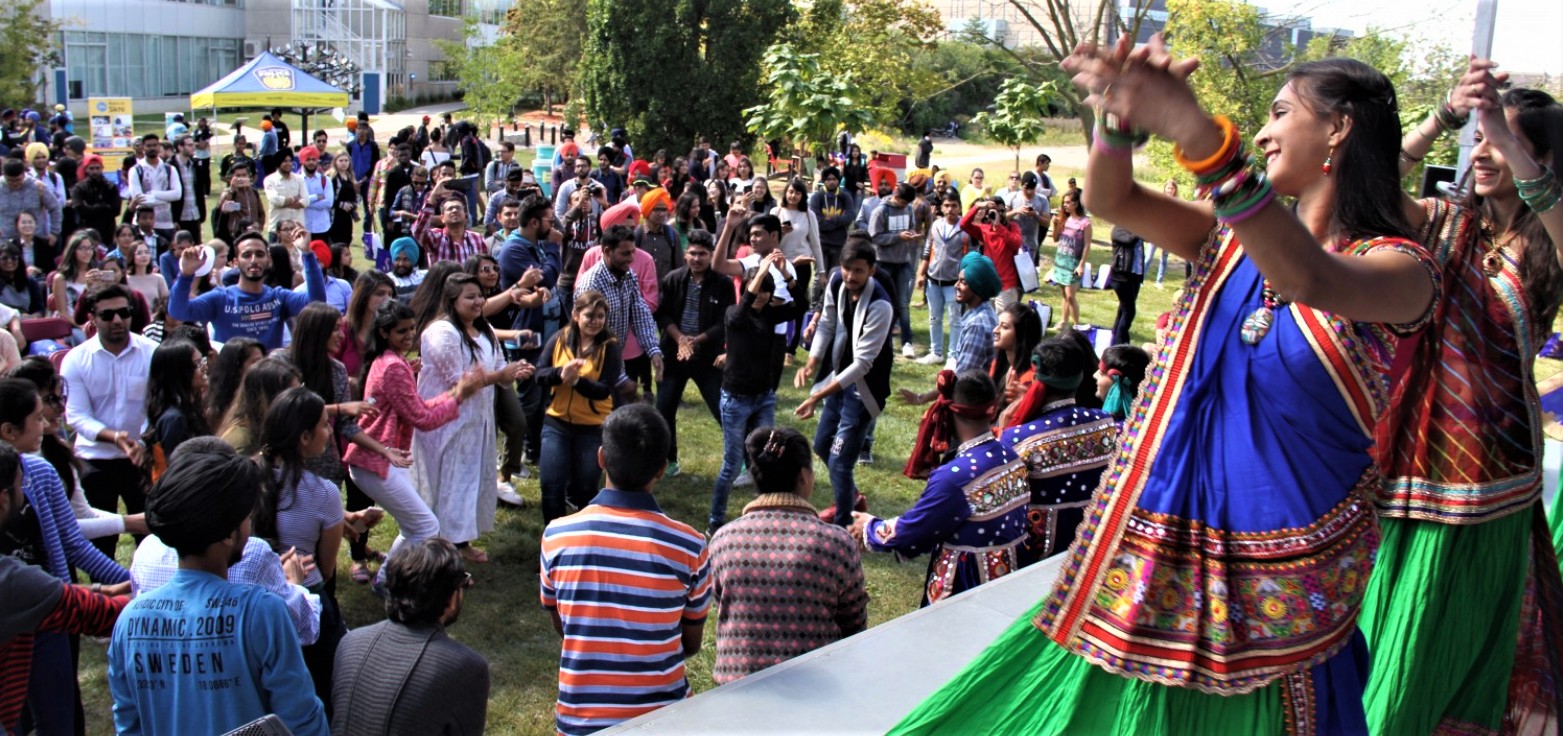
Elsewhere on the federal election campaign trail, immigration has been a headline issue, pushed to the top by a variety of factors. One was the government’s botched attempt to open an online portal to reunite families — a portal that ran out of spaces inside 11 minutes. Another factor is the creation of Maxime Bernier’s People’s Party of Canada and its vocal stance on lowering immigration.
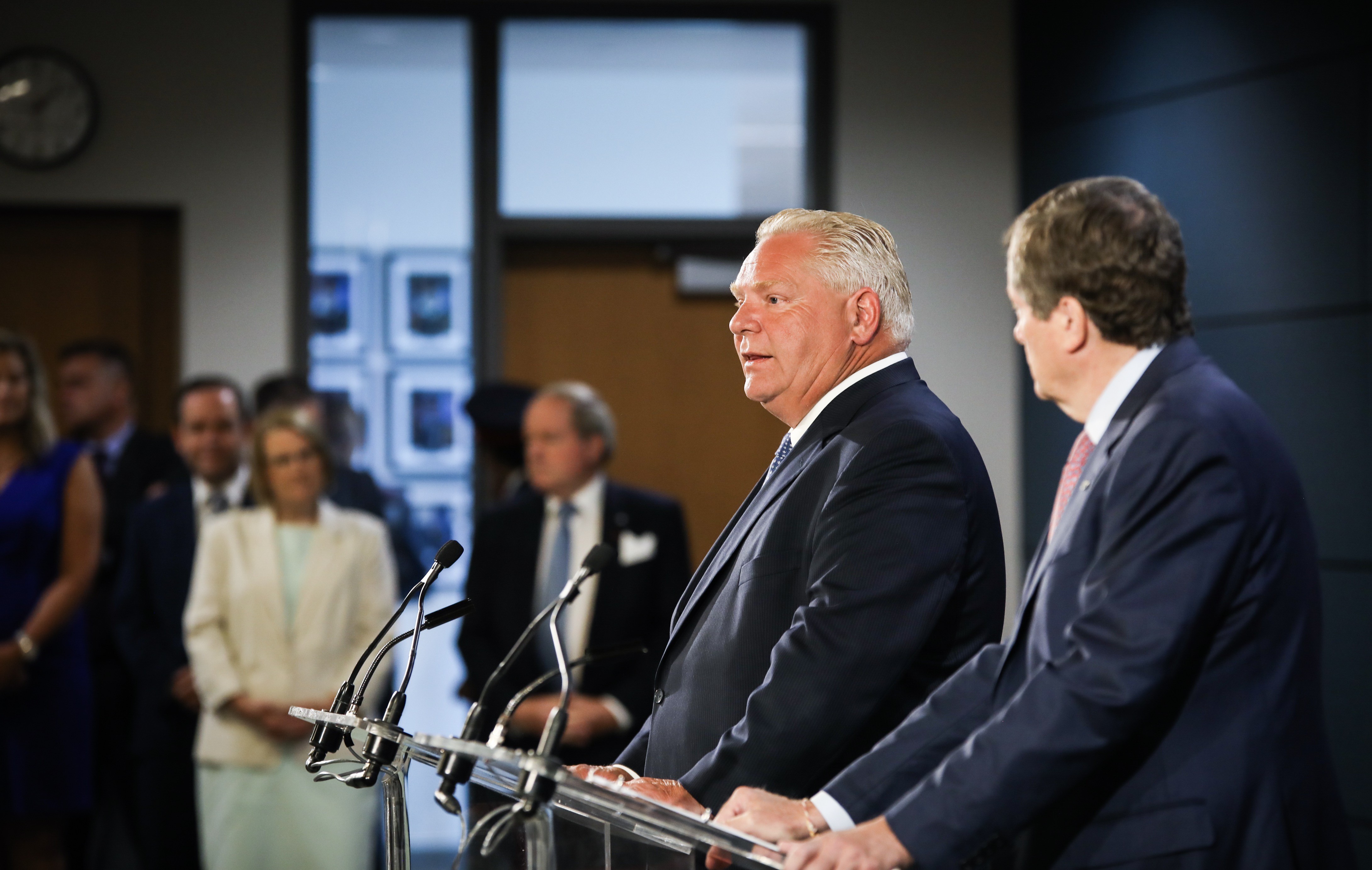
Premier Doug Ford
Generally speaking, Justin Trudeau and the Liberals have defended their high immigration targets, which would welcome 350,000 newcomers to Canada annually by 2021. The Conservatives have been critical of the Liberal approach, without offering too many details on their own platform, suggesting they will “set immigration levels consistent with what is in Canada’s best interests.” The NDP have pledged that immigration should be set to “meet Canada’s economic needs.”
Study permits, though, present a slightly different angle on the immigration debate. Often those who favour limiting immigration argue that prospective immigrants with strong qualifications and skills should be prioritized — a category that students at Canadian institutions fit upon graduation. However, entry under the study visa system is influenced by universities, with some students arguably choosing to study here with the objective of getting a temporary work visa upon graduation. Foreign students pay a big premium to study here, with tuition rates of around $15,000 per year in Peel and as much as $38,000 in Ontario as a whole. Some wonder to what extent students are paying those amounts in the hope of achieving permanent residency.
The Liberal Party supports the contribution students and graduates make to Canada’s economy, a spokesperson told The Pointer. “Our Liberal Party team recognizes the immense benefits of immigration and we have been successful in our efforts to attract the best and brightest to choose Canada to come and study,” said the spokesperson, adding that “International students bring tremendous economic, cultural and social benefits to Canada. They also contribute over $21 billion a year to Canada’s economy and sustain thousands of jobs in Canada.”
The Conservative Party did not respond to a request for comment sent last Friday, while their website offers limited information on the topic. The only related pledge readily available online to guide voters is a promise to “stand up for families and ensure that spouses and children can be reunited.”
The NDP, on the other hand, offers details on the party’s priorities for international students if elected. A spokesperson said the NDP would like to reform the express entry system to concentrate on skills, while also recognizing work contributions made by international students if they apply for permanent residency. They went on to add that support must be offered from the federal government to help students integrate, saying: “Too often, private colleges have employed deceptive tactics to exploit international students into paying large amounts of money for tuition so they could settle in Canada afterwards. International students deserve better than this — there must be better regulation so that we can end this exploitation and concentrate our efforts on helping international students, if they decide to stay in Canada permanently, settle like all other immigrants.”
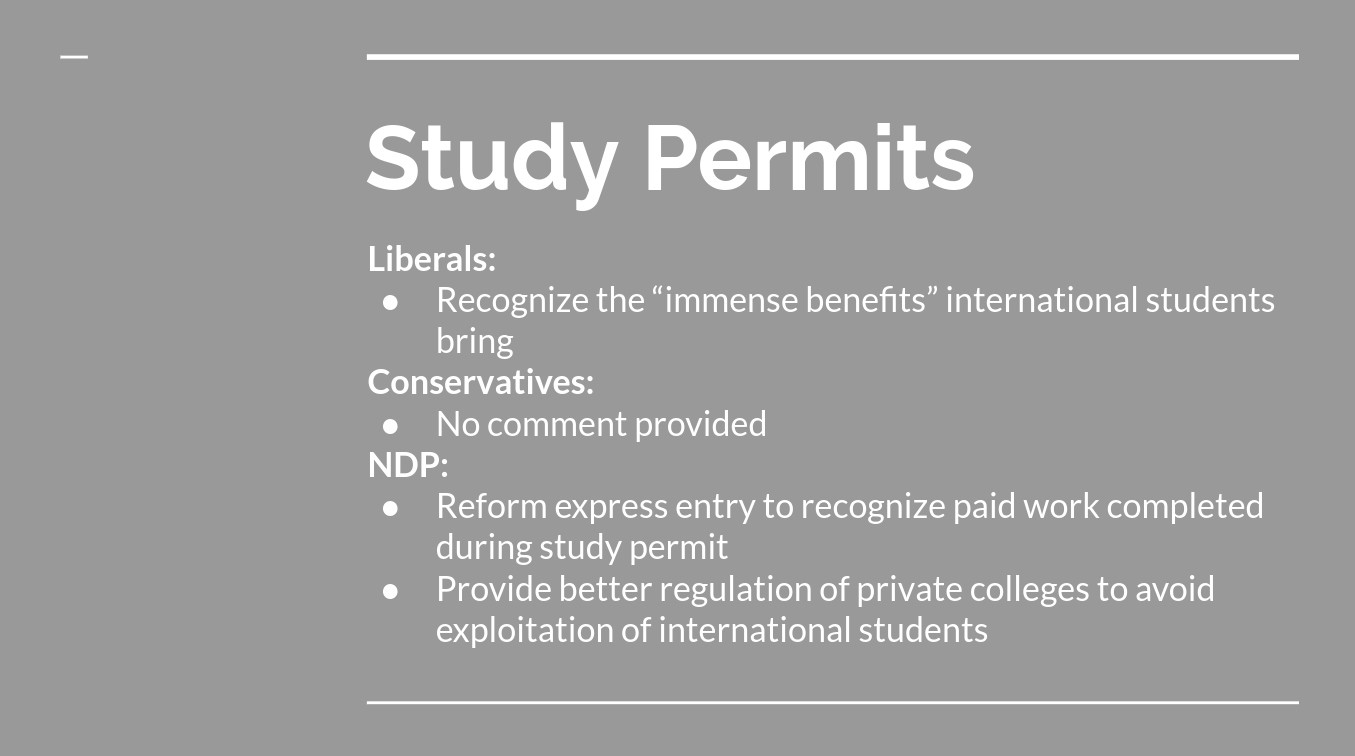
While there may be some issues with private companies and colleges duping international students into taking worthless courses with the carrot of permanent residency, there are other concerns. To apply for a study permit, students must first receive a letter of acceptance from an institution the government recognizes, meaning that students must be accepted to their college before they are granted the right to study in Canada. Some, but not all, students are required to provide a police certificate to serve as a background check. Students are also required to put $10,000 in an account to be released to them in monthly increments during their stay in Canada. Compared to other more rigorous routes into Canada, this is relatively straightforward but comparatively expensive. A language test and acceptance to university take the place of the points-based system that applies to most immigrants. Annual tuition of $15,000 or more, added to a mandatory annual spending of $10,000, makes life costly for students, who are normally limited to 20 hours per week of work.
IRCC confirmed to The Pointer that police certificates were not a requirement “for all study permit applicants,” but did not explain the criteria that determines who needs to go through that step. Instead, it advises each candidate to consult the instruction guide for their program to determine if they require one.
Once students have jumped through all the hoops to study at institutions such as Sheridan or U of T Mississauga, the government’s responsibility largely disappears. Sheridan, for example, provides some orientation in students’ home nations, as well as when they arrive. This is intended to help with integration for young people far from home who could otherwise slip through the cracks and be at risk for being pulled into gangs, sexual exploitation or something less ominous but equally dangerous — the need to work more than their allowed hours to survive. Doing the latter could mean risking deportation, something that happened to a Canadore College student , Jobandeep Singh Sandhu, earlier this year, after he was arrested for working extra hours as a truck driver to pay for his studies.
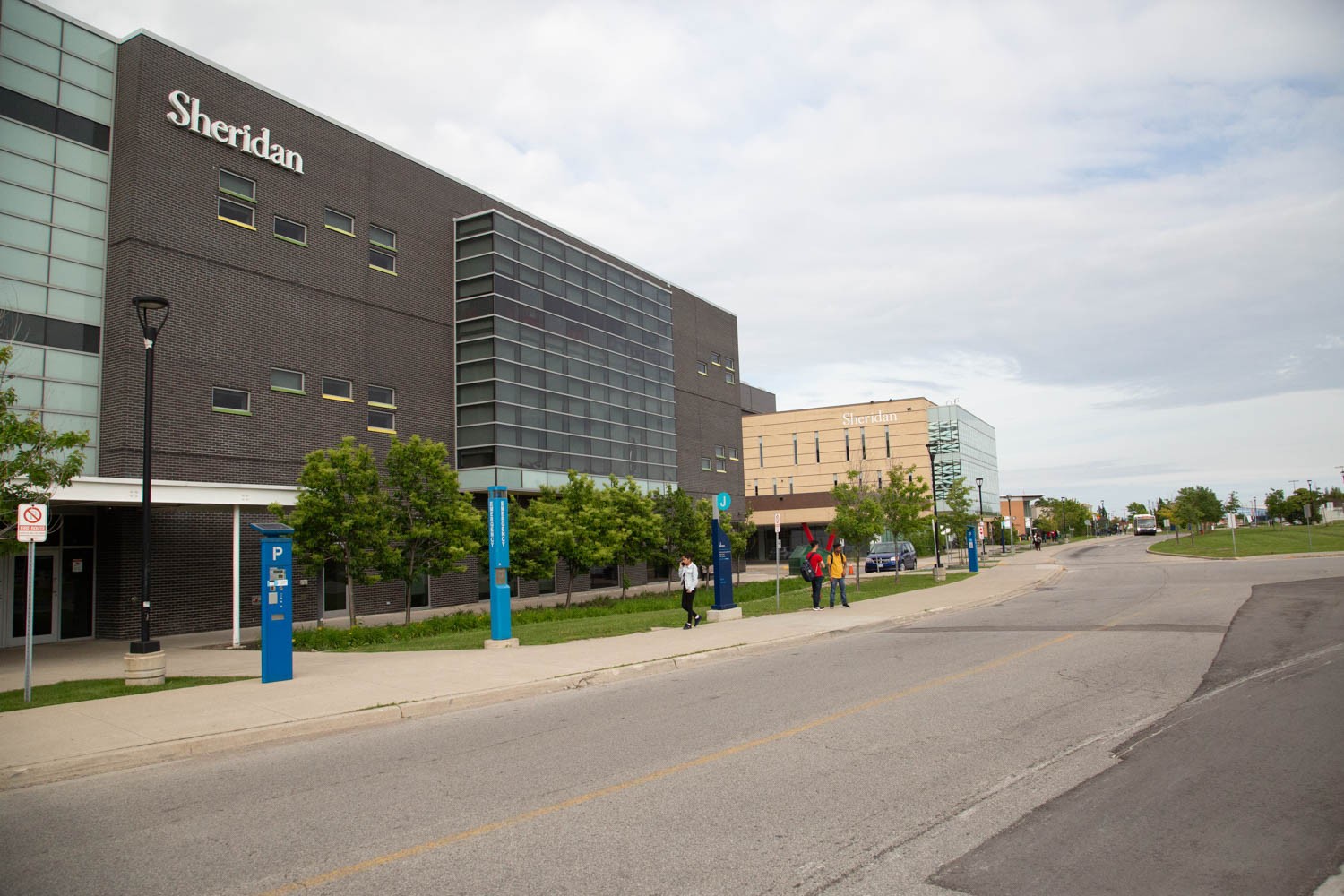
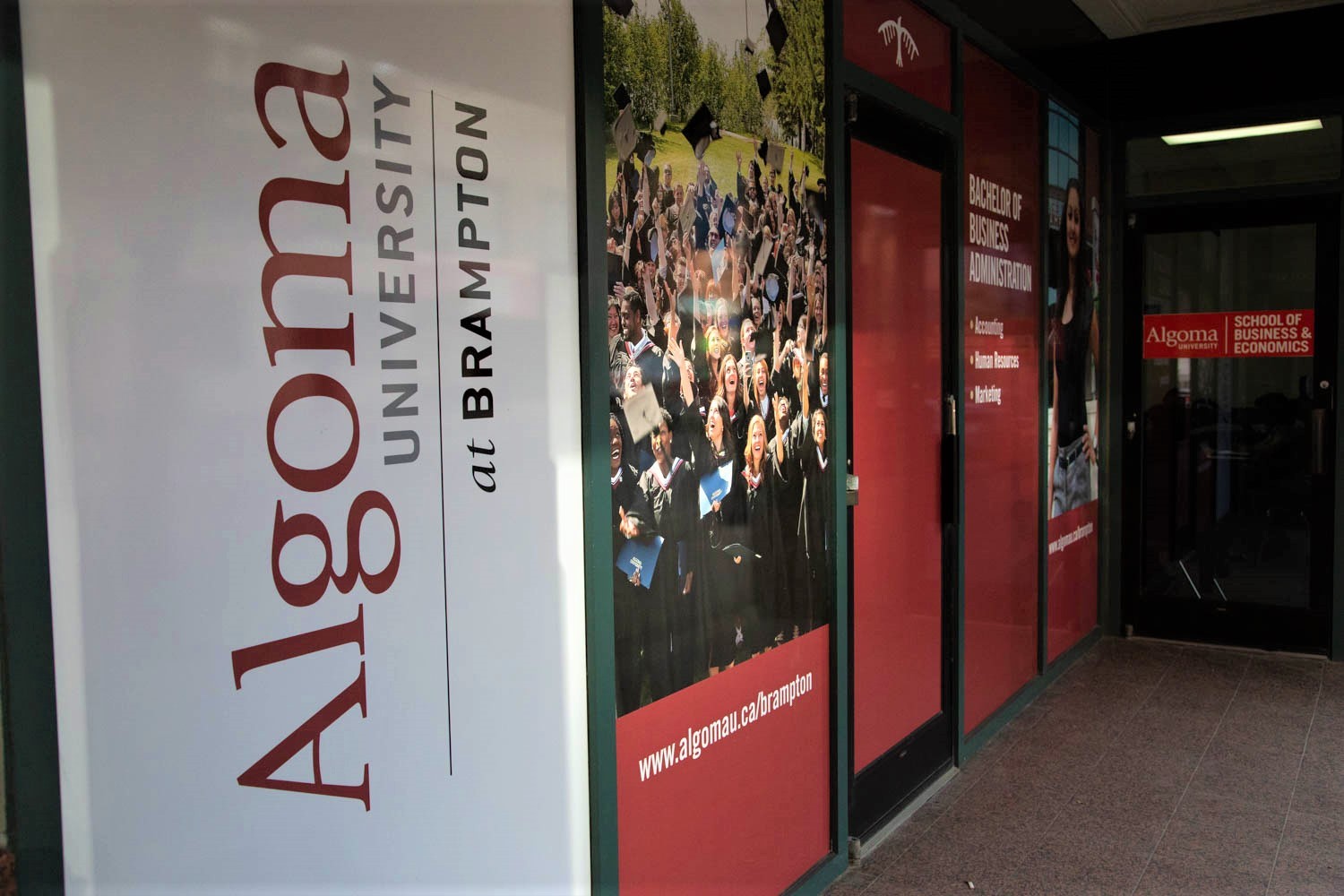
In some Brampton communities, perceptions about international students have taken a downturn over the past year after videos were shared online of brawling incidents that were blamed on overseas students. No evidence was offered that those involved were actually international students, and Sheridan College released a statement saying: “it is important that we do not wrongfully jump to conclusions and associate these acts of violence with any students, whether they are international or domestic, post-secondary or otherwise.”
Surjeet Singh, who attends Humber College but lives in Brampton, said his application for a study permit was straightforward and handled by a professional immigration advisory service. He told The Pointer a police certificate was not required for his application. However, he complained about the high costs faced by international students. “We have to pay off huge amounts for everything we need,” Singh said, adding that work permit restrictions also made him and his fellow students ineligible for certain scholarships.
Singh added: “Colleges should focus on providing placement after studies, because most of the students can’t find work in the field of study. If a student is in critical medical condition, then the government should waive hospital and all treatment fees.” He added that “there should be accommodations available for students at cheaper prices.”
As Canada’s international student population continues to grow, so will the number of new arrivals in Mississauga and Brampton. Unfounded fears over crime by international students may seem like xenophobic profiling, but they also reveal a certain degree of discontent among Peel residents about government policy. Some question whether a policy of expanding the international student population — allowing college admission to determine who is granted a study visa — is tied to a broader immigration strategy or driven mainly by the lucrative fees Canadian post-secondary institutions are able to charge students eager to study here.
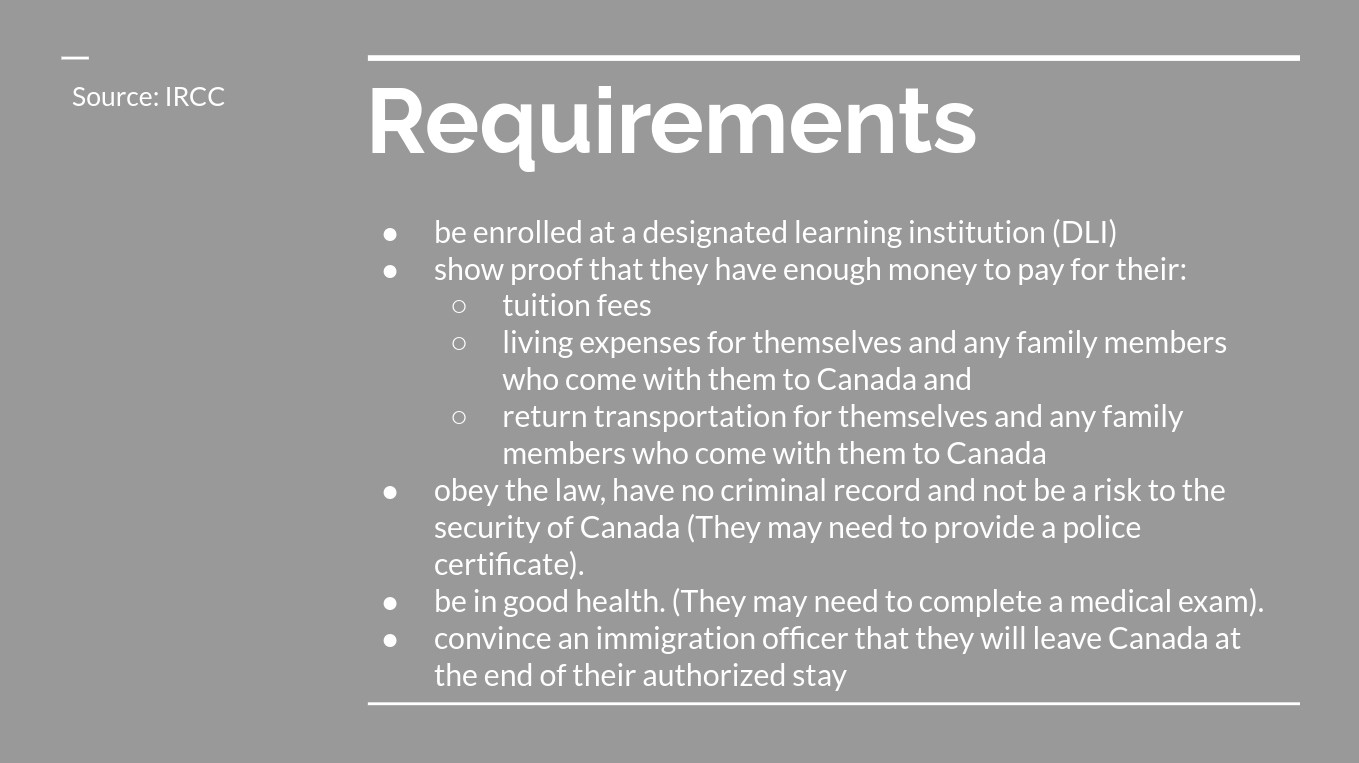
Where comments from the Liberals suggest another Trudeau government would continue with the current program of expansion, Conservative silence hints at a campaign unaware of a policy affecting Brampton and Mississauga. Comments provided by the NDP seem the most conclusive and offer a welcome understanding of the issue, alongside commitments to help with the settlement of international students during and after their degrees.
As fast-growing cities built on immigration, Mississauga and Brampton are certainly suitable locations for students from India, China and other countries to come and study. Residents of both cities are generally comfortable with cosmopolitan communities and supportive of immigration. However, with populations of more than 600,000 in Brampton and 900,000 in Mississauga, both represent urban labyrinths that are hard and expensive to navigate for students who have to juggle their studies with limited working opportunities and socialization in a new society.
Although the election is still several weeks away and battle lines are constantly being redrawn, this vital subtopic in the immigration debate seems to have been somewhat ignored. As cities that will continue expanding their student and immigrant populations over the next four years, residents of Brampton and Mississauga would do well to ask their local candidates where they stand on the issue.
Email: [email protected]
Twitter: @isaaccallan
Submit a correction about this story


